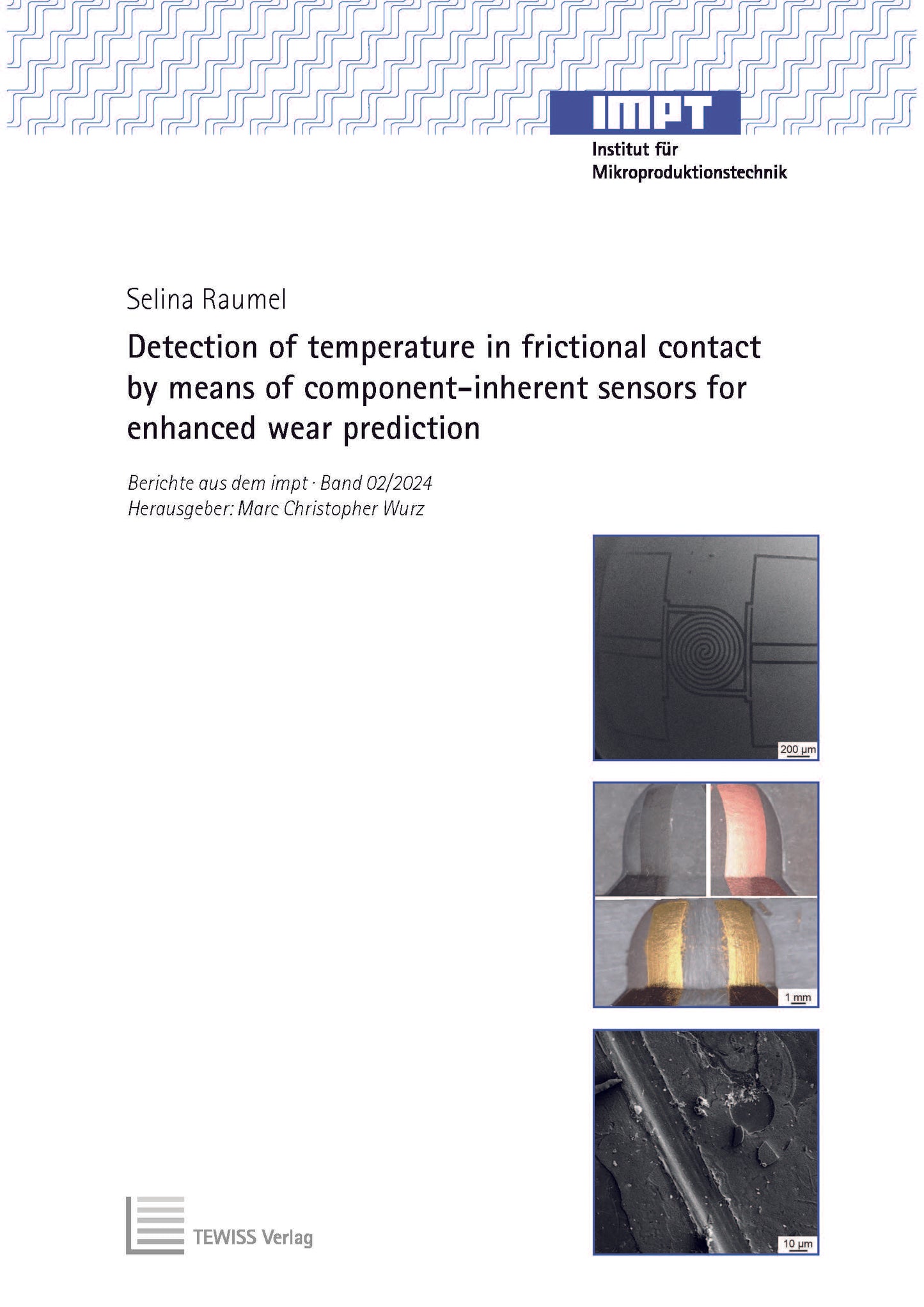Detection of temperature in frictional contact by means of component-inherent sensors for enhanced wear prediction
Autor: Selina Raumel
ISBN: 978-3-95900-934-8
Dissertation, Leibniz Universität Hannover, 2024
Herausgeber der Reihe: Marc Wurz
Band-Nr.: IMPT 02/2024
Umfang: 194 Seiten, 91 Abbildungen
Schlagworte: Temperature sensors, laser ablation, frictional contact zone, atmospheric dependency, high temperature sensor, laser direct structuring
Kurzfassung: Within the scope of this work conducted in the Collaborative Research Center 1368 “Oxygen-free production”, a new component-inherent sensor concept on non-planar surfaces is presented for measuring friction-induced temperature changes as a function of atmosphere, process parameters and ambient temperature during frictional ball-on-disc tests to improve wear prediction. The development and manufacturing of the platinum thin-film sensors on ceramic spheres via laser ablation involves the characterization of suitable sensor layouts, wear-resistant/isolation and friction layers. A laser structuring process is developed for machinable BN+AlN components to enable mechanical contacting of the sensors via the ball mount outside the friction contact area. Using an expanded measurement setup, friction tests are conducted under ambient atmosphere and under an atmosphere adequate to an extremely high vacuum using a silane-doped argon gas. To assess the fundamental effects of the friction-induced temperatures and their impact on resulting boundary layers, surface-sensitive analysis techniques are employed. Indentation tests are conducted in a high-temperature chamber to examine the thermomechanical properties in dependence of the surrounding atmosphere. The insights gained are utilized to expand the well known Archard wear model by including the dependence of the measured friction-induced temperature and atmosphere.


